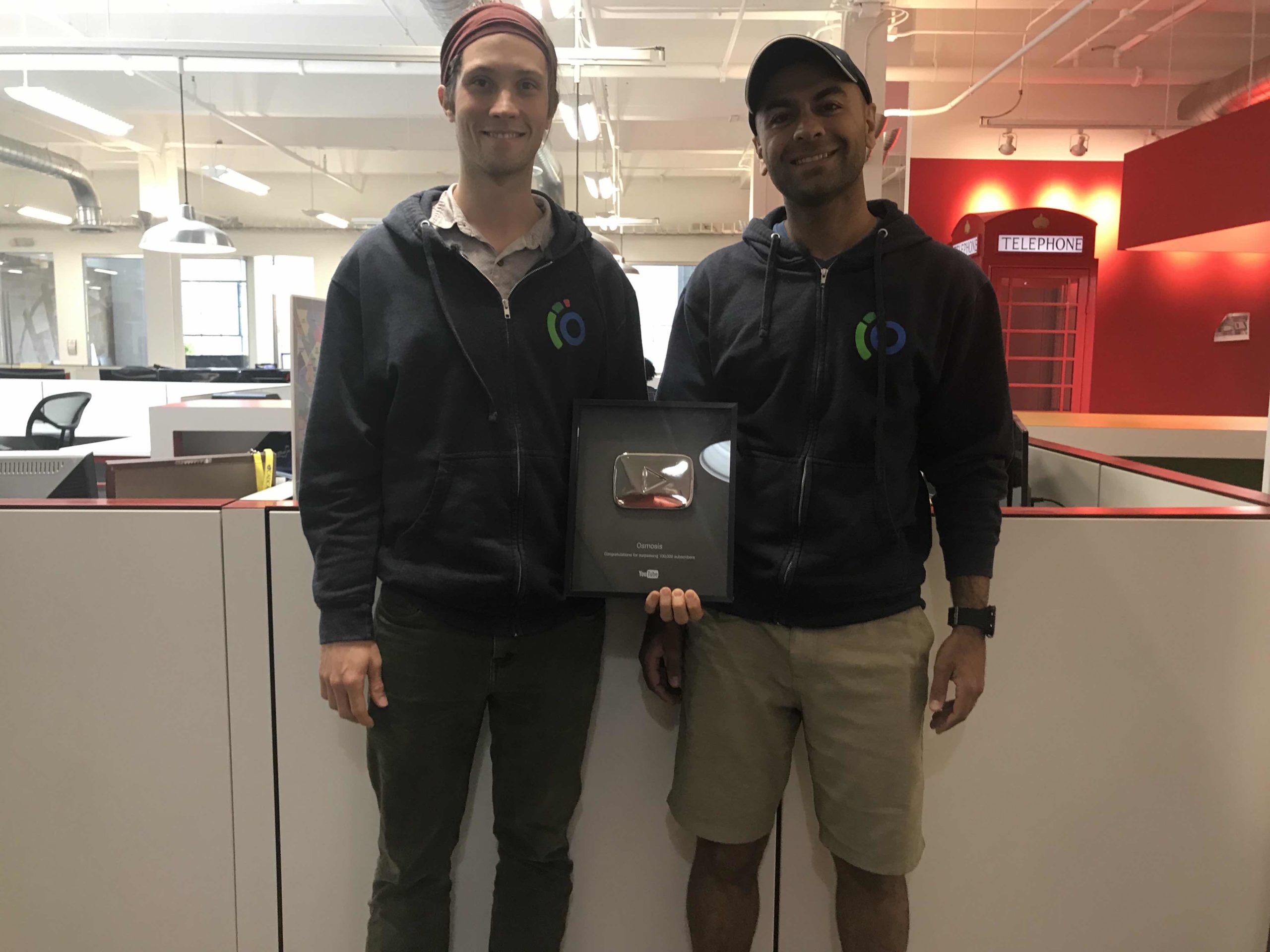When Shiv Gaglani and Ryan Haynes started Osmosis, Gaglani said the audience for the startup’s health education offerings was a group of classmates at Johns Hopkins School of Medicine.
About seven years later, the company’s YouTube channel containing videos designed to make medical concepts approachable has 1 million subscribers. During an interview, Gaglani did the quick math on how many 120-member lectures that would reach.
“That’s 8,333 auditoriums worth of students,” the CEO of the company said as we talked at the company’s offices inside Brewers Hill HUB inside Canton’s Natty Boh Tower.
The reflection came on the morning that Gaglani was getting ready for a meeting with the team to celebrate the million-subscriber milestone. The feat also earns a special “creator award” from YouTube, known as the Gold Play Button. That award will go alongside the silver award, a plaque, for 100,000 subscribers in the office.
Osmosis also has another 500,000 users on its platform, which provides access to more videos and health education resources, some of which overlap with the YouTube subscribers.
When it comes to the overall amount of time spent watching the company’s content, Gaglani offers this stat: 600 years. (Here’s the breakdown by country.)
So what’s driving the popularity? Gaglani points to a mix of factors. For one, there’s the content. The colorful animation style, which involves anthropomorphizing certain organs, also plays a role. And the team has identified standards around length and scripting.
Then there’s the voice, provided on many of the videos by Tanner Marshall. With a conversational delivery, he’s become something of a YouTube celebrity in medical education circles.
“When I go around to medical schools, people know Tanner’s voice,” Gaglani said.
Marshall, who joins Gaglani as one of the five team members based in Baltimore, didn’t have formal training in voice. But in developing the voice for the videos, he said it was key to figure out how to get words from page to voice in a way that sounded like someone who would talk normally. That important for medical concepts, which can get dense.
“I try to read the script not as though as it’s a script, but like I would say it,” said Marshall. The company now has a team of voiceover artists.

Tanner Marshall has fans. (Courtesy photo)
Another key to growing was offering more content. That meant figuring out the process of creating the videos, where Marshall has also had a lot of influence. He recently made the jump to the product side, and has used knowledge of the creative process to help build technology that can help the company’s team with illustrations.
Osmosis mainly offers the YouTube videos in order to provide access and exposure to its content, as well as a way to get the word out about the platform.
“That’s where a lot of the people are,” Gaglani said of YouTube. “It was top of the funnel growth for us, and so as we started putting more content on YouTube and growing that base, we started seeing more people come to our site because they knew the brand and trusted it.”
It comes as the company is looking to grow in Baltimore. It has another 35 remote employees, but the city has remained a base. Along with being where it started at JHU’s medical school, the company’s foundational investors are based in the city, and Gaglani points out that it’s close to about 20 medical schools between D.C., Baltimore and Philly. Now the company is looking to add tech talent in Baltimore.
And speaking of YouTube, Gaglani recently gave a TEDx Talk that has more on the ideas behind the company:
Join our growing Slack community
Join 5,000 tech professionals and entrepreneurs in our community Slack today!
Donate to the Journalism Fund
Your support powers our independent journalism. Unlike most business-media outlets, we don’t have a paywall. Instead, we count on your personal and organizational contributions.

Comcast introduces ultra-low lag Xfinity internet that boosts experiences with Meta, NVIDIA and Valve

Maryland firms score $5M to manufacture everything from soup to nanofiber

This Week in Jobs: Add these 26 tech career opportunities to your vision board


